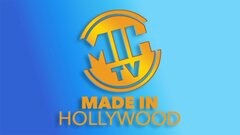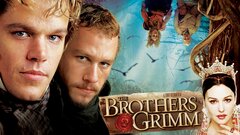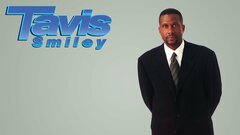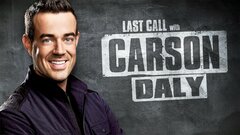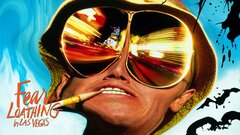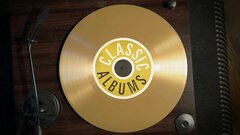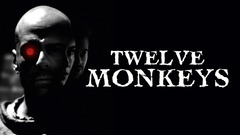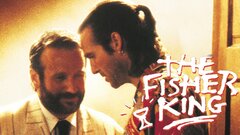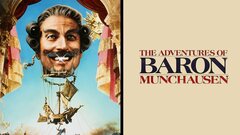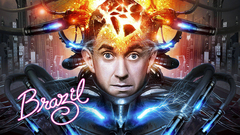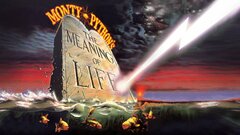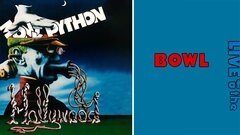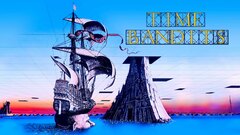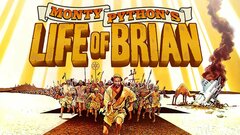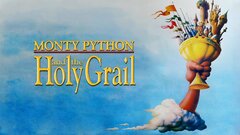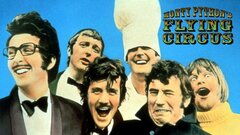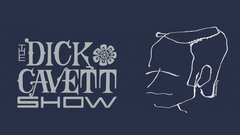A successful animator who worked for several magazines and British television shows before becoming famous, Terry Gilliam became the quiet sixth member of the famed comedy troupe Monty Python before graduating to the status of acclaimed feature director. Though he spent little time working in front of the camera, save for small roles the other five Pythons refused to play, Gilliam was responsible for the infamous cut-out animation that was used in the opening credits and as a segue between skits on "Monty Python's Flying Circus" (BBC, 1969-1974).
After co-directing the troupe's first official feature, "Monty Python and the Holy Grail" (1975), he ventured off on his own to make visually striking and surrealist films like "Jabberwocky" (1976), "Time Bandits" (1981) and the acclaimed comedic dystopia "Brazil" (1985). In 2000, his first stab at "The Man Who Killed Don Quixote" (2009) was plagued by disaster and injury from the start, leading to a nine-year hiatus before returning to production, while "The Imaginarium of Doctor Parnassus" (2010) suffered the unexpected death of star Heath Ledger in early 2008. Regardless of insurmountable odds, Gilliam trudged forward, continuing to make some of the most imaginative films on both sides of the pond.
Born on Nov. 22, 1940 in Medicine Lake, MN, Gilliam spent the first part of his childhood surviving the bitter cold of the American Midwest before the family moved to Los Angeles when he was 11. He graduated Birmingham High School in Lake Balboa, CA, where he was an exceptional student, class president, valedictorian, prom king and voted "Most Likely to Succeed." But despite his accomplishments, Gilliam harbored the desire to draw cartoons - a skill he developed as a young boy.
Moving on to higher education, he attended Occidental College in Los Angeles on scholarship, where his sterling academic record went to pot amidst slacking off and pulling practical jokes, like stealing cadavers from the medical department and leaving them around campus. Over four years, he switched majors from physics to fine arts to political science. All the while he worked as the editor and cartoonist of Fang, the college's conservative magazine that Gilliam turned into a humor publication. Begging a professor for a passing grade so he could graduate, Gilliam earned his bachelor's in 1962 and promptly moved to New York.
In New York, he began working as an associate editor for Help! magazine, a humor rag ran by Gilliam's idol, Harvey Kurtzman, who founded Mad magazine. It was there that Gilliam met John Cleese, who was performing off-Broadway as a member of the Cambridge Footlights and appearing in a photo story about a man having a relationship with a Barbie doll. After three years working at Help!, Gilliam moved back to Los Angeles and landed a job as a writer and art director for the Carson-Roberts Advertising Agency, where he designed posters and wrote ad copy for Universal Pictures. He hated it. Gilliam left the United States amidst burgeoning political turmoil in 1967 and traveled to London, where his encounter with Cleese back in New York led to contributing animated sequences for such British television shows as "We Have Ways of Making You Laugh" (ITV, 1968) and "Do Not Adjust Your Set" (ITV, 1967-69).
On the latter show, he met soon-to-be Python members Terry Jones, Michael Palin and Eric Idle, while developing the distinctively satirical, surreal and downright bizarre animation that later helped define Monty Python.
After working with Palin, Idle and Jones, as well as reacquainting himself with Cleese, the group got together to create "Monty Python's Flying Circus" (BBC, 1969-1974), an absurdist sketch comedy program that broke the mold for all others that followed. Gilliam was brought into the comedy troupe formed by the other five to use his cut-out animations to segue from one sketch to another in stream-of-consciousness style. While he created many outlandish images, Gilliam's greatest contribution was the famed Monty Python foot that stamped down the titles during the show's opening, which was actually Cupid's foot from Agnolo Brozino's erotic painting, "An Allegory of Venus and Cupid." While his animation was prominent onscreen, Gilliam himself remained, for the most part, behind-the-scenes. He did, however, appear on camera in roles the other five did not want to play - mainly small parts that required heavy makeup or uncomfortable costumes.
Gilliam's most noted recurrent role was an armored knight who would walk into a sketch at random and hit characters with a rubber chicken. By the time the series ended in 1974 after four seasons, Gilliam was contributing to episodes as a writer.
But while "Monty Python's Flying Circus" ended, the comedy troupe remained together. They went to work straight away on a feature film, "Monty Python and the Holy Grail" (1975), which Gilliam co-directed with Terry Jones. Shot on a shoestring budget, "The Holy Grail" consisted of all new material - unlike the previous rehash of their show's skits, "And Now for Something Completely Different" (1971) - centered around King Arthur (Graham Chapman) and his futile search for the legendary cup of Christ with his Knights of the Round Table. Absurd, self-referential and unabashed in its stinging humor, the film was an instant cult classic, thanks to memorable scenes like the Black Knight, who refuses to back down from a fight even after all his limbs are hacked off; an obnoxious French guard (John Cleese) who chides Arthur and his knights with adolescent taunts like "I fart in your general direction;" and the infamous Knights Who Say Ni. Though he was in large part off-screen, Gilliam was memorable for playing Patsy, Arthur's grimy servant who follows the king around banging two empty halves of coconuts together.
In one of the numerous moments where the film broke the fourth wall, Gilliam appears as a weak-hearted animator who dies of a sudden heart attack, thus ending the cartoon threat to the knights known as the Legendary Black Beast of Arrrgghhh!Branching out on...
...his own, Gilliam directed the Python-esque "Jabberwocky" (1977), an absurdist fantasy starring Michael Palin as a cooper's apprentice - or barrel maker - who looks to make it big during the Dark Ages. Not as coherent or funny as "The Holy Grail," the film established the director's dark comic tone and absurdist imagery for which he later became known. Back with his mates, Gilliam wrote and co-starred in the troupe's next film, the far superior "Monty Python and the Life of Brian" (1979), an irreverent farce that follows a Jewish man named Brian (Chapman) who gets mistaken for being the messiah during the time of Jesus (Kenneth Colley). More cohesive than their first effort, "Life of Brian" was the strongest effort by the Pythons to make a narrative film while still retaining the outlandish gags and overall silliness that marked their careers. While many moments in the film were memorable, none were as striking as the final scene where a crucified Brian sings "Always Look on the Bright Side of Life" with his fellow martyrs. Also notable was the lack of juxtaposing animation typical of a Python effort.
The only animation used was during the opening title sequence. In this film, Gilliam did appear onscreen more in various roles and uttered a favorite line: "I think he said, "Blessed are the cheesemakers.'"Once again breaking away from his Python roots, Gilliam directed his second feature film, "Time Bandits" (1981), a dark comedy masquerading as a children's fantasy about a curious English school boy (Craig Warnock) who is whisked away across time and space by six dwarves on a robbing spree across several epochs of history. Along the way, the young boy meets several historical personages, including Napoleon (Ian Holm), Robin Hood (John Cleese), and King Agamemnon (Sean Connery). After participating as a writer and performer in the last two Monty Python projects, "Monty Python: Live at the Hollywood Bowl" (1982) and "Monty Python's The Meaning of Life" (1983), Gilliam ran afoul of the studio system with "Brazil" (1985), the director's ambitious satire about a drone-like civil servant (Jonathan Pryce) battling against the oppressive bureaucracy of the governing state.
Gilliam publicly clashed with Universal over the release of the film. The studio balked at the length of this darkly comic look at a futuristic society, resulting in two versions; a European cut that ran 142 minutes and an American one that clocked in at 131 minutes. It was the beginning of a series of headaches Gilliam would endure throughout his career.
After months of squabbling with Universal, including a full-page ad in Variety from Gilliam that demanded the studio release the film as is, the matter came to a head when ...
...the still-unreleased "Brazil" earned Best Picture, Best Director and Best Screenplay prizes from the Los Angeles Film Critics. At the time of its initial release - and in part because it had become a cause célèbre - "Brazil" was a moneymaker in a limited amount of venues. Once it opened wider, with little support from the studio, "Brazil" proved less successful. The studio cut, which ran nearly an hour less, was aired on American television but lacked Gilliam's trademark fantasy sequences. His vision of an Orwellian future was eventually restored when a director's cut was released in 1998. Following such a dark and convoluted tale, Gilliam directed "The Adventures of Baron Munchausen" (1988), a visually stunning spectacle that combined state-of-the-art special effects with a resplendent production design, impeccable cinematography, and fantastical costumes to tell the story of Baron Munchausen (John Neville) and his attempt to save a town from being taken by the Turks. Despite the striking visuals, structural problems abounded in the story - as with much of Gilliam's work, slow pacing in the second half caused the film to slog along. Regardless, Neville delivered a fine performance in the title role.
After a three year absence, Gilliam returned to features with another imaginative fable. Working from a strong script by Richard La Gravenese, he helmed "The Fisher King" (1991), which starred Jeff Bridges as a callous talk show host who encounters a former college professor-turned-homeless man (Robin Williams) whose life, Bridges discovers, he has impacted in a horrific way. With several wonderful set pieces, particularly a fantasy set in Grand Central Terminal, the film tied the director's visual flair to a more heart-warming and accessible journey that the public got behind en masse. Gilliam directed one of his most intriguing projects, "12 Monkeys" (1995), an eye-popping return to futuristic fare starring Bruce Willis as a man perpetually doomed by fate. In adapting Chris Marker's "La Jetee" as a sci-fi thriller, he wove a compelling yarn about a convicted criminal from the future (Willis) who is sent back in time to stop a deadly virus that nearly wipes out mankind, only to realize that he may in fact just be insane. He next tackled a long-aborted project that many tried and failed to translate ...
...to film, Dr. Hunter S. Thompson's "Fear and Loathing in Las Vegas" (1998). Starring Johnny Depp as the good doctor, the film followed Thompson to Las Vegas, where he tries to report on a motor car race while battling LSD-induced lizards and an imposing police presence. While critics and audiences were divided over how successful he was in adapting Thompson's Gonzo novel, it was clear that Gilliam had come closest to capturing the free-spirited essence of his work.
Gilliam ran head-first into bitter disappointment with a disastrous attempt to fulfill his long-held dream of filming his take of Miguel de Cervantes' Don Quixote. Gilliam's "The Man Who Killed Don Quixote" was a $32 million film set to star Johnny Depp as a modern-day hero who is transported back in time to find himself acting as Sancho Panza to old Don Quixote. Despite the promising premise, the movie was plagued by catastrophe from day one, including the loss of French actor Jean Rochefort, who was cast in the title role, due to a herniated disc. Meanwhile, a torrential storm flooded the set, causing the Madrid-based production to come to an immediate halt, leaving Gilliam creatively frustrated and - much like Don Quixote himself - tilting at windmills in a battle he would never win. The entire experience was the basis of a second film, "Lost in La Mancha" (2003), which used footage intended for a DVD feature to tell the painful, but fascinating story of Gilliam's struggle and ultimate defeat in making his film.
"Lost in La Mancha" was an enlightening peek at the behind-the-scenes battles that occur during the movie-making process.
Gilliam intended his next effort, the adventure fable "The Brothers Grimm" (2005), to serve as a major comeback. But once again, the visionary, but embattled director clashed with the studio heads - in this case, the infamous brothers Bob and Harvey Weinstein, who meddled one too many times for Gilliam's liking. Their biggest mistake was firing his regular cinematographer, Nicola Pecorini, after six weeks of filming, which came after the executives refused Gilliam his first choice of lead actress, Samantha Morton. Gilliam became so enraged by the Weinsteins' constant influence that production was shut down for two weeks. Eventually, he reconciled with the Weinsteins and the filming continued.
When released, audiences were treated to a comedic fantasy focused on a fictionalized version of the Bavarian brothers (Matt Damon and Heath Ledger) known for their famous fairy tales, casting them as con artists who trick simple-minded villagers into paying them to solve the fake supernatural curses that the brothers themselves have rigged, only to be tasked with solving a genuine magical curse that has befallen a local town. Their bizarre encounters serve as inspiration to the legendary stories they would later hand down to future generations. Though visually rich, as expected, "The Brothers Grimm" lacked the panache of Gilliam's more imaginative fare and failed to fulfill the promise of the script, which at one time was a hot commodity in Hollywood.
With his next film, "Tideland" (2006), Gilliam had a relatively drama-free production - at least in comparison to his previous efforts. But what he produced onscreen far outdid anything he had done in terms of going overboard with his visuals, particularly in a scene when the main character, a little girl (Jodelle Ferland) who lost her mother (Jennifer Tilly) to a drug overdose, carries on conversations with severed Barbie doll heads in a barren wasteland of a prairie. Gilliam did, however, coax an exceptional performance out his young lead, Ferland, who earned awards and nominations when the film traveled the festival circuit. Gilliam ran into tragedy of a different sort with his next project, "The Imaginarium of Doctor Parnassus" (2009), which starred Heath Ledger as a mysterious outsider who joins a travelling theatre group headed by the immortal Doctor Parnassus (Christopher Plummer). About a third of the way through shooting, Ledger died of an accidental drug overdose in early 2008, leaving the rest of the production in doubt. But instead of abandoning the project, Gilliam enlisted the help of Ledger friends and peers, Johnny Depp, Jude Law and Colin Farrell, who played revamped incarnations of Ledger's role while collectively diversions their salaries to the actor's daughter, Matilda.
Though delayed for two months, filming resumed and was completed in short order, with a release date set for the summer of 2009. Gilliam changed the film's opening credits and dedicated the work to Ledger and his actor friends who came to the rescue and helped him finish. Meanwhile, Gilliam resurrected "The Man Who Killed Don Quixote" from the dead after almost a decade since the disaster that befell the previous shoot. Once again starring Depp as Sancho Panza, the film went into pre-production in early 2009 with a tentative release date set for the following year - provided no flash floods or injured stars loomed on the horizon.












































